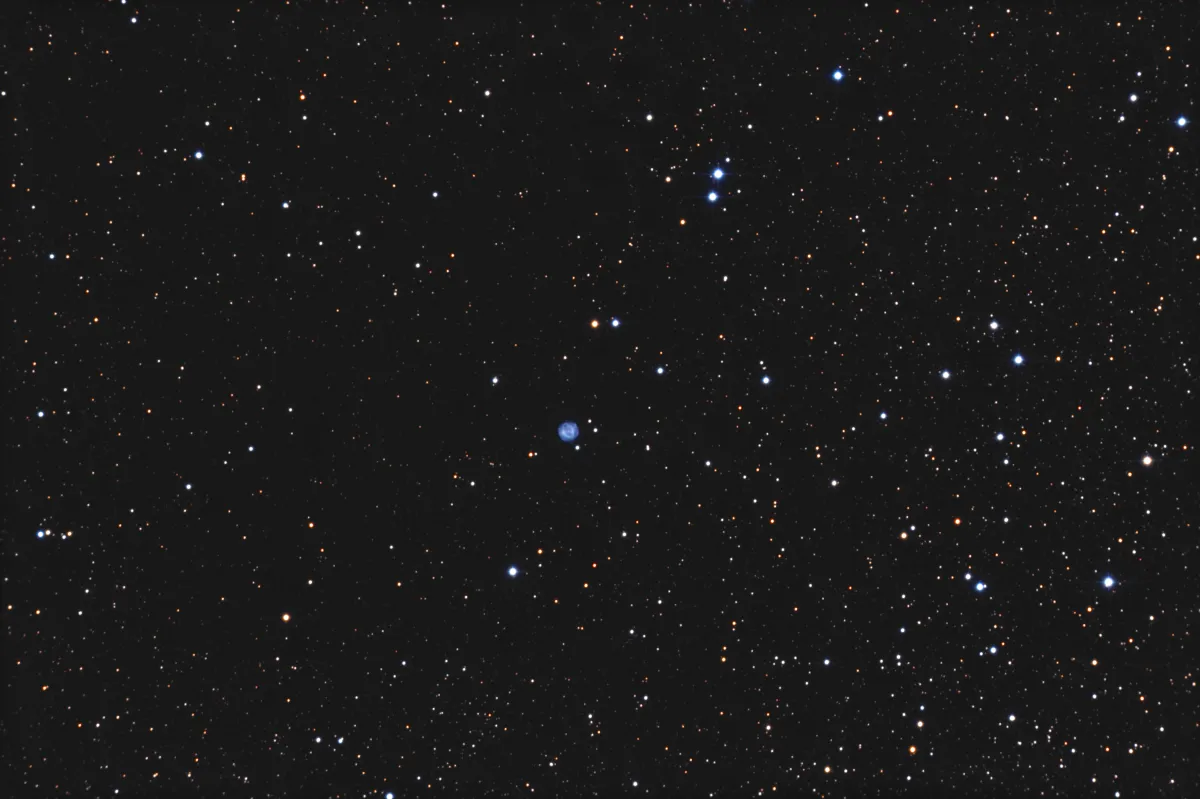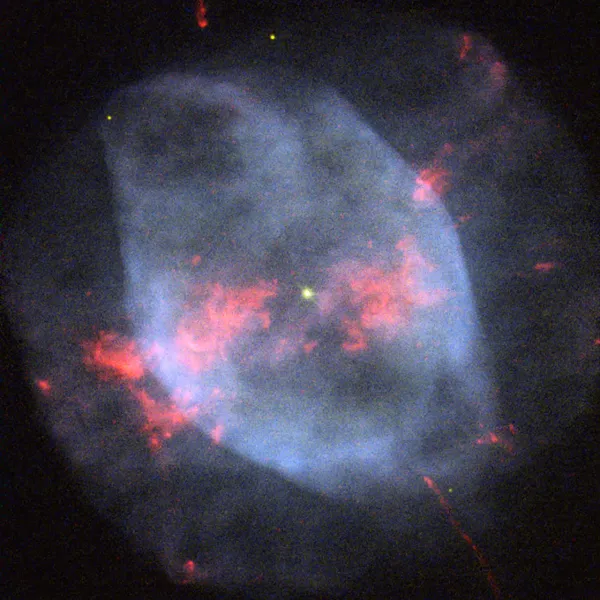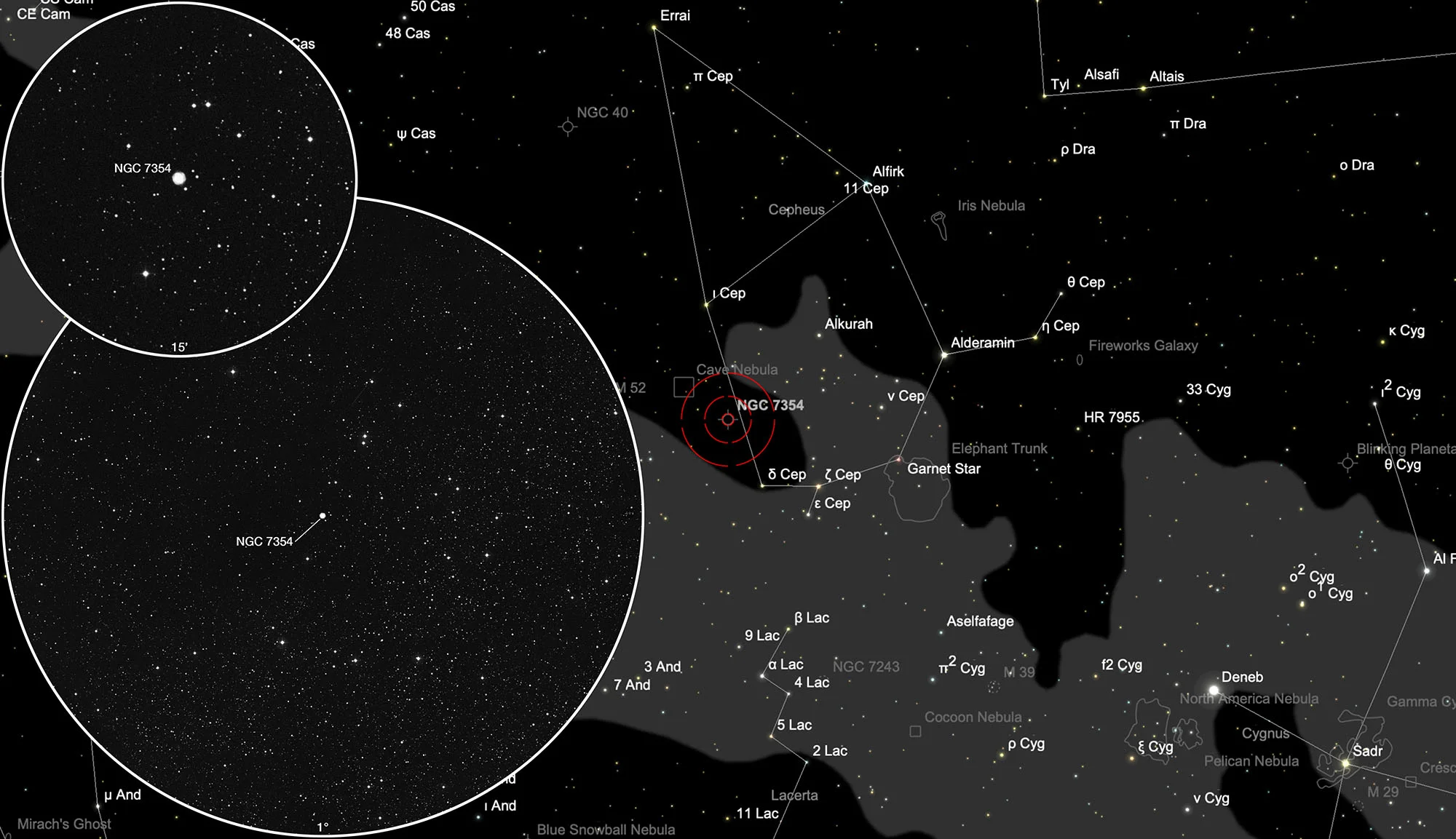Planetary Nebula NGC 7354

History
This nebula was discovered on 3 November 1787 by the German-British astronomer William Herschel. He cataloged it as «faint nebula» with entry II 705 and noted: «Pretty bright, small, irregularly round, almost equally bright.» [464] His son John observed the on 9 October 1829, cataloged it as h 2178 and noted: «Bright enough to be noticed and caught in sweeping in full moonlight, with the moon on meridian, pretty gradually brighter in the middle, round, no nucleus seen.» [466] In his «General Catalogue» published 1864 the nebula is listed with the designation GC 4827. [467]
Lord Rosse (or more likely one of his assistants) suspected the nebula to be a planetary in 1861. [486] John L. E. Dreyer added then the nebula as NGC 7354 in his 1888 «New General Catalogue of Nebulae and Clusters. [313]
Physical Properties

Winds from the central star are believed to play an important role in the shape of planetary nebulae. The composition of NGC 7354 is relatively easy to distinguish: the PN consists of a spherical outer envelope, an ellipsoidal inner envelope, a collection of bright knots concentrated in the centre, and two symmetrical jets shooting gas into the interstellar medium on either side. It is believed that these properties were caused by a companion star of the central star, but its presence has not yet been confirmed. The distance to NGC 7354 is about 4200 light years. [350]
| Designations | PN G107.8+02.3: NGC 7354, PK 107+02.1, ARO 55, VV 278, VV' 567 |
| Right Ascension (J2000.0) | 22h 40m 20s |
| Declination (J2000.0) | +61° 17' 06" |
| Dimensions | 23." (optical) |
| Distance | 1.5 kpc |
| Radial Velocity | -41.0 ± 2.0 km/s |
| Expansion Velocity | 25.0 (O-III) 27. (N-II) km/s |
| C-Star Designations | AG82 445 |
| C-Star Magnitude | V: >16.2 |
| Discoverer | LORD ROSSE 1862 |
Finder Chart
The planetary nebula NGC 7354 is located in the constellation Cepheus. On 1 September it is in opposition to the Sun and crosses the meridian at local midnight. The best viewing time is May to January when the constellation is highest in the night sky.
